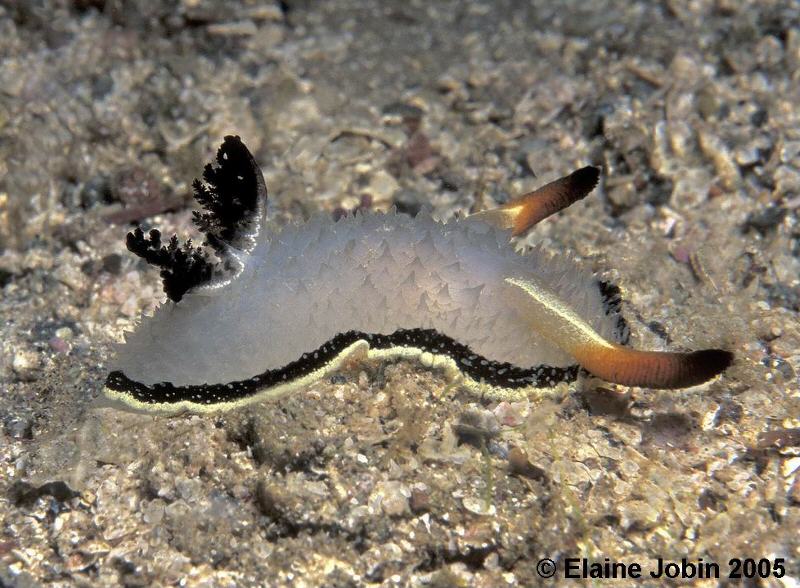 |
Acanthodoris rhodoceras
Photo taken at Catalina Island (California)Photo courtesy of Elaine Jobin
Acanthodoris rhodoceras
Cockerell and Eliot, 1905Theodore Dru Alison Cockerell and Charles Norton Edgecombe Eliot chose the trivial name "rhodoceras" to call attention to this species red tipped rhinophores, "rhodoceras" meaning red horn. Originally described from San Pedro, California, the species geographic range now extends into the Gulf of California to Bahia de los Angeles, and north to the mouth of the Umpqua River in Oregon.
Like other members of the genus the dorsum is covered with tall pointed papillations. Its ground color is white, with a yellow marginal band followed by a black band. The gill and rhinophores are tipped in black. The rhinophores have a very distinctive opaque white line running up the posterior, to the red region, clearly seen in Elaine’s photo above.
Elaine’s specimen is an example of the color phase without black on the dorsal papillations. Often, specimens will have numerous, random papillations tipped in solid black as if dipped into ink. See also an image taken at La Jolla Shores, San Diego, California by SDUPS photographer Tracy Clark which is also illustrative of this color variation in addition to displaying A. rhodoceras's egg mass
Members of this genus feed on bryozoans, and Acanthodoris rhodoceras is reported to feed specifically on Alcyonidium sp.